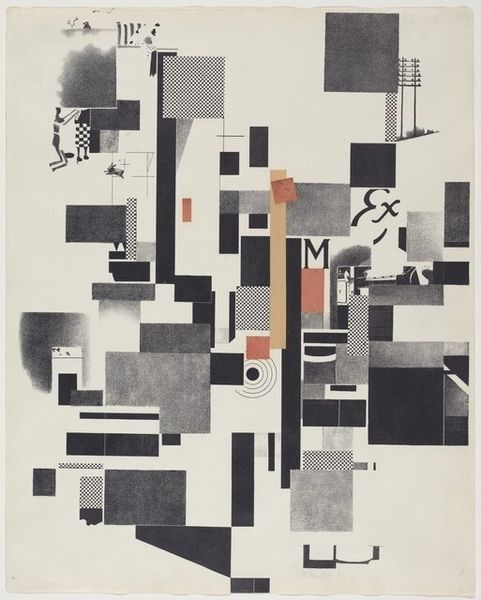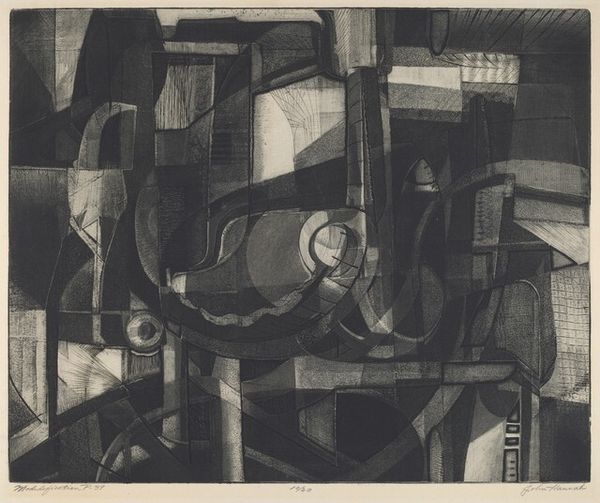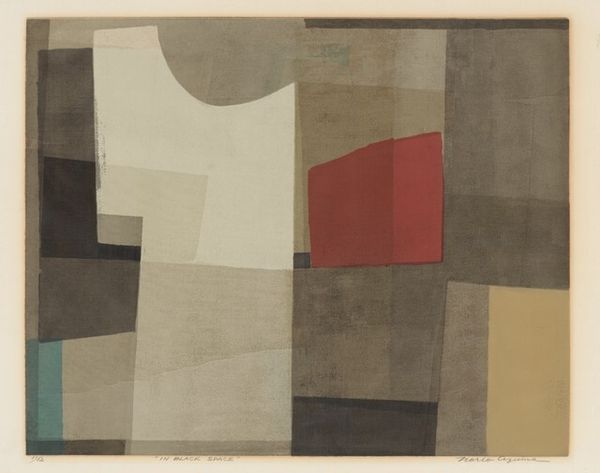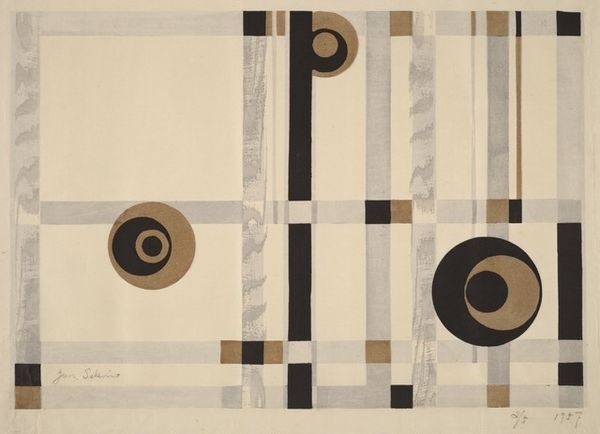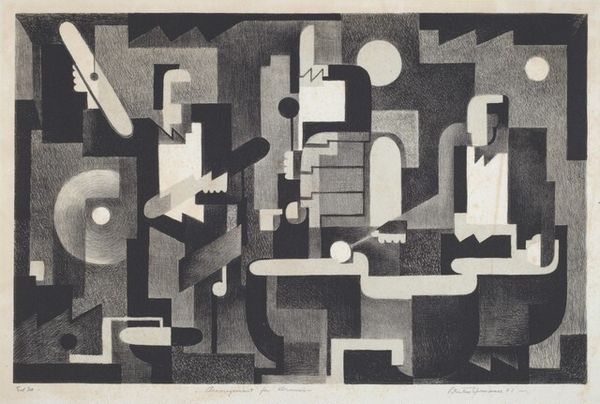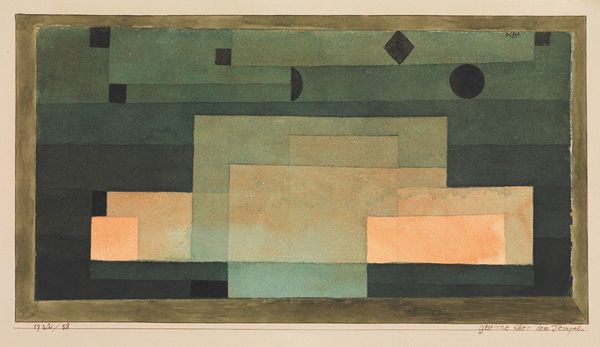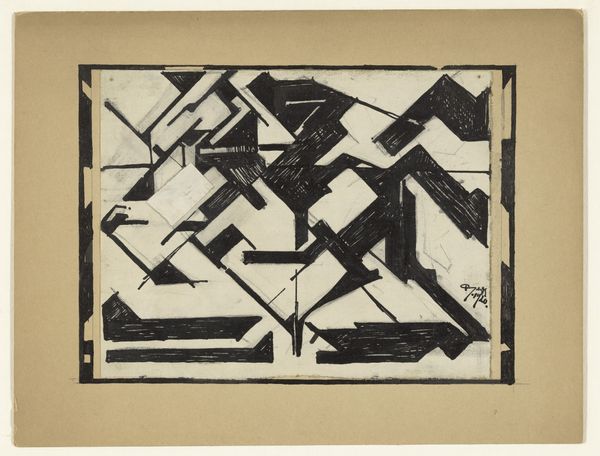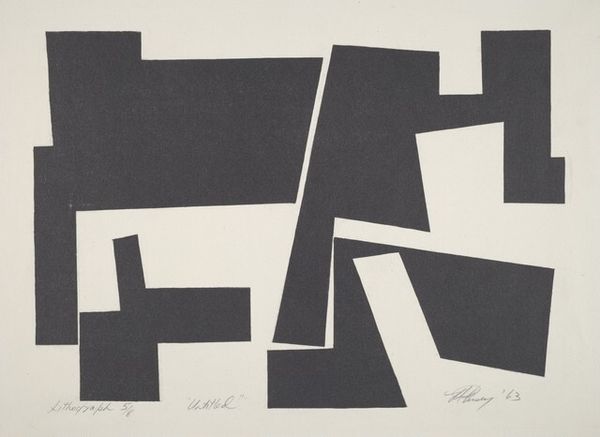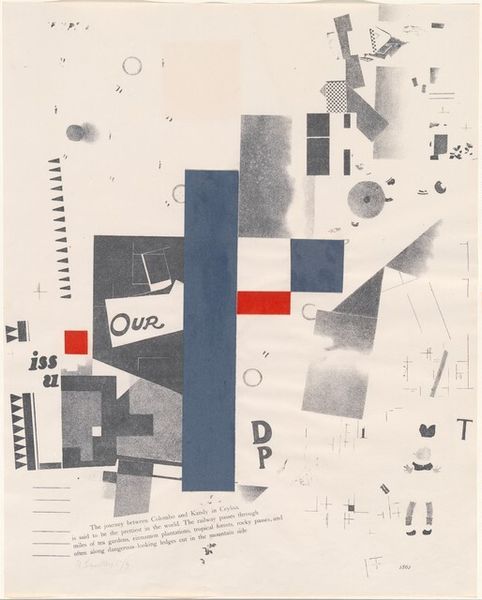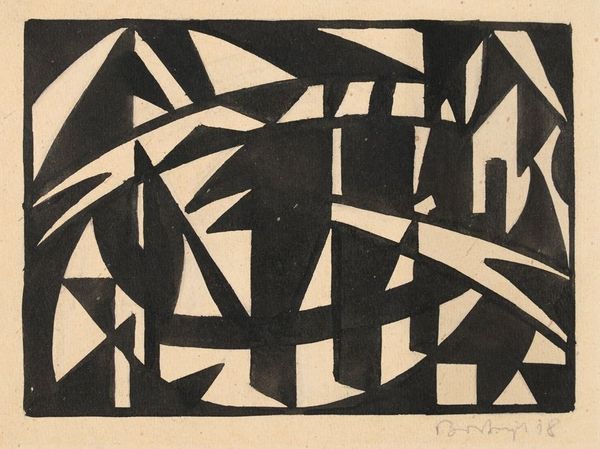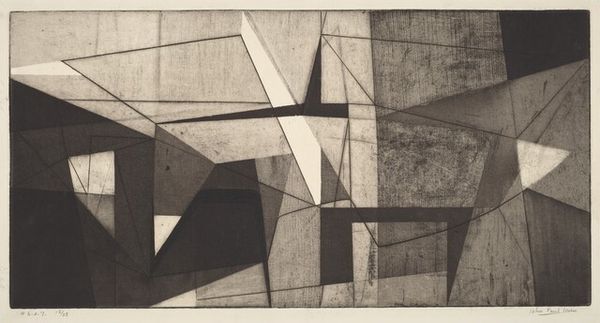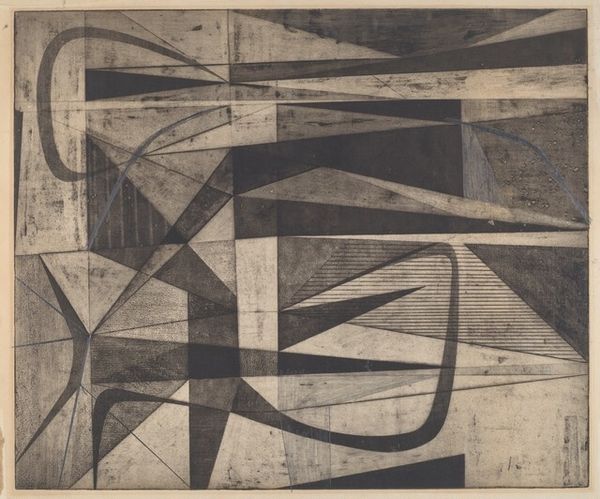
Dimensions: 302 mm (height) x 459 mm (width) (bladmaal), 277 mm (height) x 310 mm (width) (billedmaal)
Curator: Welcome. We are standing before Franz Wilhelm Seiwert’s 1932 woodcut, “Komposition med en arbejder og en bonde,” or “Composition with a Worker and a Farmer.” It is a striking example of social realism meeting abstraction, a tight dance of black and white. Editor: My first thought? Stern! Utterly serious. These figures seem almost built from stone, yet they're alive with a sense of forward motion. I wonder what sort of weight those heavy, dark blocks would have, translated into emotional baggage? Curator: Formally, the print showcases Seiwert’s engagement with geometric abstraction, a feature prominent in post-WWI German art. Notice how he reduces the figures to essential shapes—cylinders, rectangles, and circles—stripped of all but crucial detail. This simplifies yet amplifies their symbolic nature. Editor: Exactly. It is like they have been distilled into the very *idea* of worker and farmer. You’ve got the tools – I think that must be a shovel on the left and perhaps a trowel on the right? But the faces…the lack of human softness is so jarring. I keep imagining what dreams or anxieties might hide behind those hard lines. Are they marching, working or simply existing in shared oppression? Curator: I find the tension less oppressive and more…purposeful. It reflects a critical stance toward the social dynamics of the time, pushing viewers to recognize their place within such constructions. Consider the woodcut medium: it necessitates carving away, reduction, in line with his reductive figuration. Editor: Hmmm, I see that, certainly the deliberate roughness speaks volumes. I get a feeling, though, that Seiwert wasn't merely dissecting the problem from a detached intellectual height, more than just analyzing. These are symbols – there is an implied humanity here even if it is reduced to these brutal forms! And maybe *because* it’s in these brutal forms, that really stings. Curator: Yes, his simplification directs our eyes towards power structures – the rigid geometry implying systems over people. And ultimately it asks, as social realist artwork is want to do, ‘who holds that power’? Editor: This little visual shot of industrialization and humanity is something that will definitely follow me as I continue moving throughout the gallery today! Curator: Indeed. And by considering the dialogue between form and subject here in this “Komposition med en arbejder og en bonde”, one might better perceive its potent commentary.
Comments
No comments
Be the first to comment and join the conversation on the ultimate creative platform.
